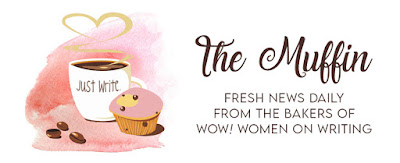Open any writer’s notebook and you’ll find a unique ecosystem, populated with lists (of books, birds), quotations, diary entries, overheard dialogue, memories sparked, striking images, sketches, and memorabilia. Some notebooks might even contain actual writing! Ask any writer how they use their notebook, and you’ll get a different answer. Amit Chauduri writes back to front—notes at the back, with the first pages free in case he starts a novel. Carolyn Forché periodically transfers the sparkiest passages from past notebooks into a new one, which becomes dense with poetic possibility.
While they fill them assiduously, many writers don’t use all of what goes into their notebooks. Much of what enters my own notebooks never leaves. Joan Didion, who wrote a whole essay on notebooks, said that her old notes “seem marginal at best.” But the list of famous writers who keep notebooks is nearly as long as the list of famous writers: not just Didion and Forché, but Thomas Hardy, Henry James, John Steinbeck, Mark Twain, and on and on. So they must be on to something.
If not as a record to return to, or fruitful ground bearing the rough drafts of their next masterpiece, why do writers keep notebooks at all?
It’s helpful to think of your notebook not as a curated repository for your undiscardable thoughts but as an integral part of a private process: your mind thinking on paper. Novelist Lawrence Norfolk says of his notebook that while it may not be useful in a utilitarian sense, it’s significant because “work passes through it on the way to becoming something else.”
However you use it, your notebook is the surest portal into yourself as a writer. It’s not a library you must keep organized, but a doorway you must keep open, to keep writing vivid and alive in your life.
Convinced? Good. Here’s a few thoughts to get you started in your habit:
The Format:
Sketch book, Word document, or scratch paper? Lined or unlined? I use apps when I must—typing and recording—but I usually use an unlined, softcover Moleskine. There’s a reason most writers use physical journals. “To me, typing is like work,” Neil Gaiman said, while “writing with a pen is like playing.” More scientifically, handwriting (versus typing) can connect us more deeply to our emotions. Virginia Berninger, a professor at the University of Washington, explains that “when we write a letter of the alphabet…that process of production involves pathways in the brain that go near or through parts that manage emotion.”
The Purpose:
Will you write whenever you feel “inspired”? Or create a more consistent practice? Will it be a notebook for brainstorming/project notes (like an artist’s notebook or scientist’s field book—as DaVinci and Darwin famously kept)? Will it be a place to write? Or a place to write about writing (a la John Steinbeck)? Or a brain dump (a la Julia Cameron) on the way to the “real” work? (Mine is a little of all of these, depending on my mood an project.)
The Process:
Can you journal every day at the same time? Or in the same circumstances every time (those free Saturday afternoons while the kids are napping)? Keep your notebook handy for whenever the mood strikes, but also consider an accompanying ritual to help firm up your habit—as simple as a cup of tea and a particular chair, or as complex as drawing a tarot card or speaking a spell.***
***
Leah Claire Kaminski holds degrees from UC Irvine and Harvard. For nearly 15 years she’s taught students to read with attention and to write poetry, academic essays, and creative nonfiction. Leah’s poetry and stories are widely published in magazines and anthologies, and in two chapbooks, Root (Milk and Cake Press, 2022), and Peninsular Scar (Dancing Girl Press, 2018). Her collection Live oak nearly on fire has recently been named a finalist for the Laureate Prize from Harbor Editions and the Paul Nemser Prize from Lily Poetry Review. She’s at work on a new collection, Small Continent of Light, and is also at work on a horror novel. Originally from Miami, Leah lived in Boston and Orange County, California before recently relocating to Chicago with her partner, child, and two cats, Bernie and Betsy. She loves writing, and teaching writing, because the page never judges. Visit her website at www.leahkaminski.com.
Leah is also a WOW! Women on Writing instructor. Check out her upcoming workshop, WHY DO I WRITE?: (Re-)Discover Your Drive, starting January 10th!



Hi Leah--I have a couple of different writing notebooks. I'm a true crime writer/podcaster, so I have one filled with so many notes that would probably horrify a random person if they happened to pick it up. Lists of unsolved murders, missing people grouped in categories, etc. I also have a gratitude journal I try to jot down thoughts in every morning. My 18-year-old daughter adores her variety of leather-bound journals and finds the process of writing fiction in them cathartic. Thanks for sharing all the different ways we can use these treasured notebooks!
ReplyDelete